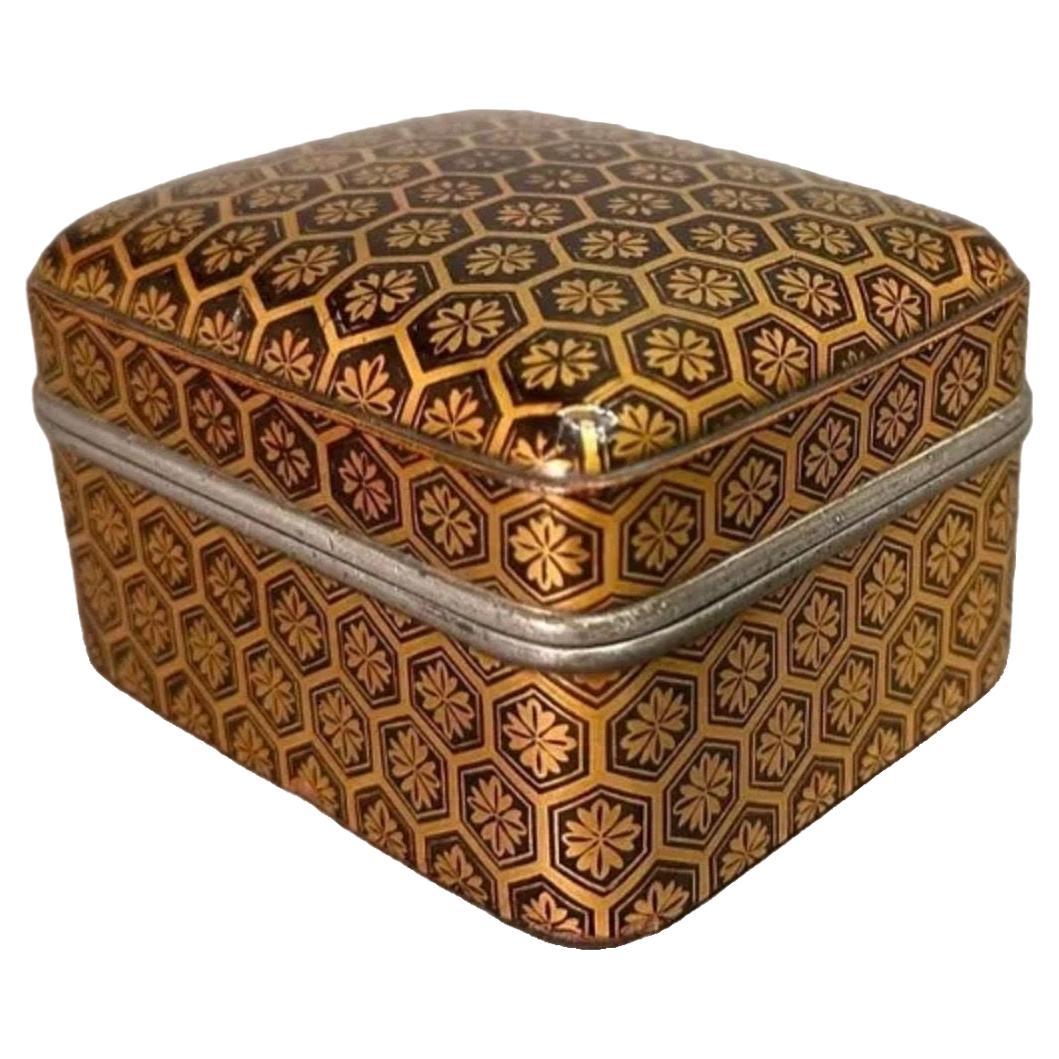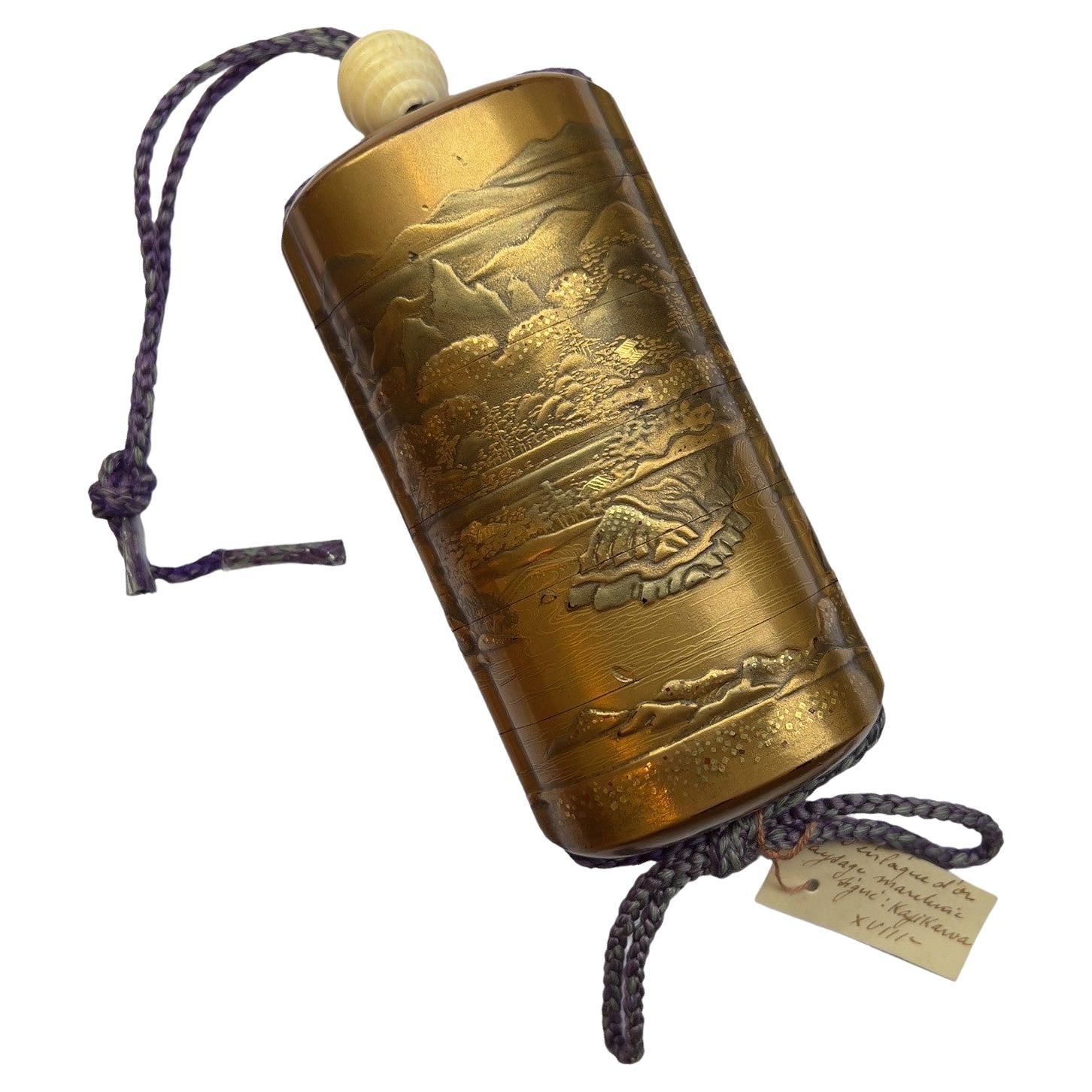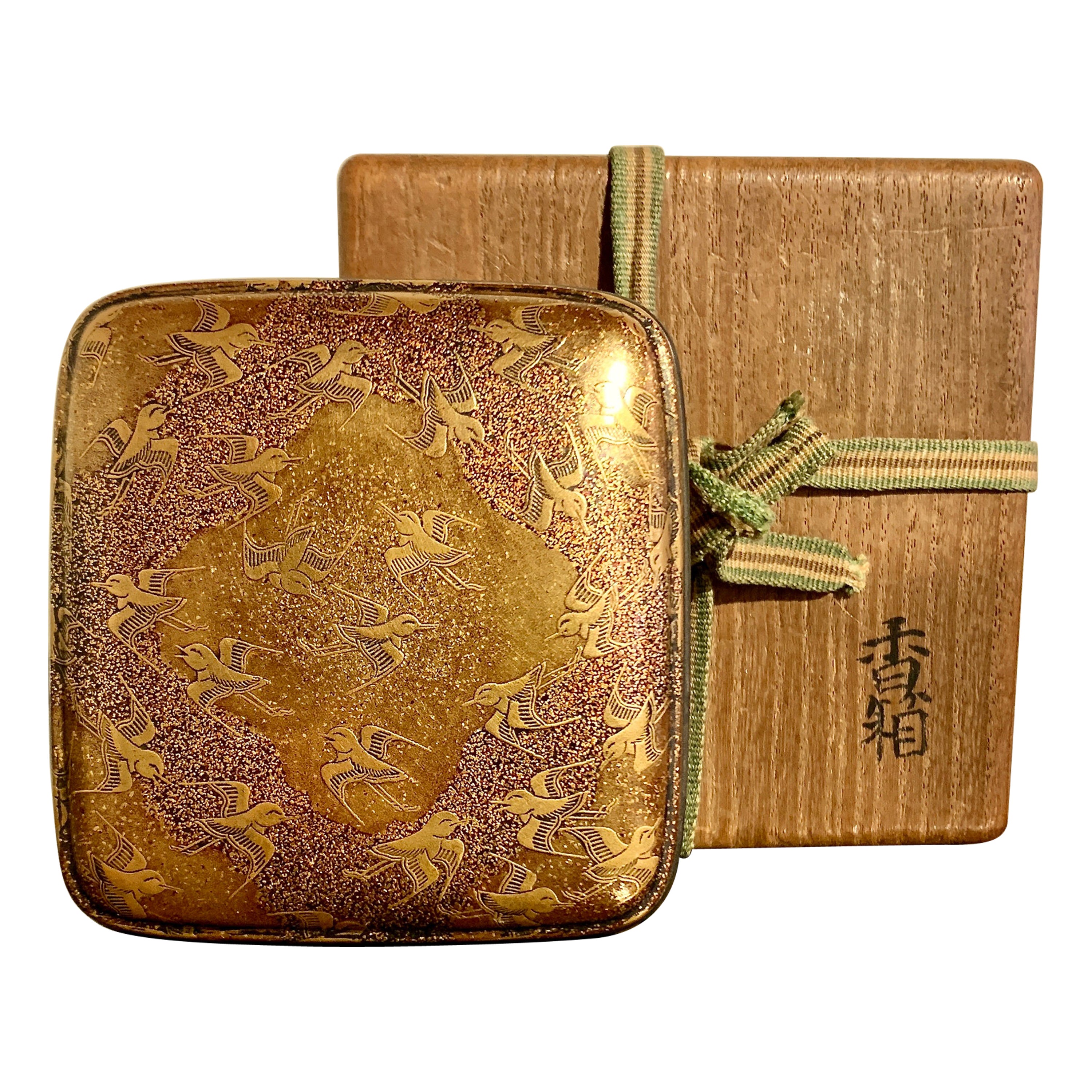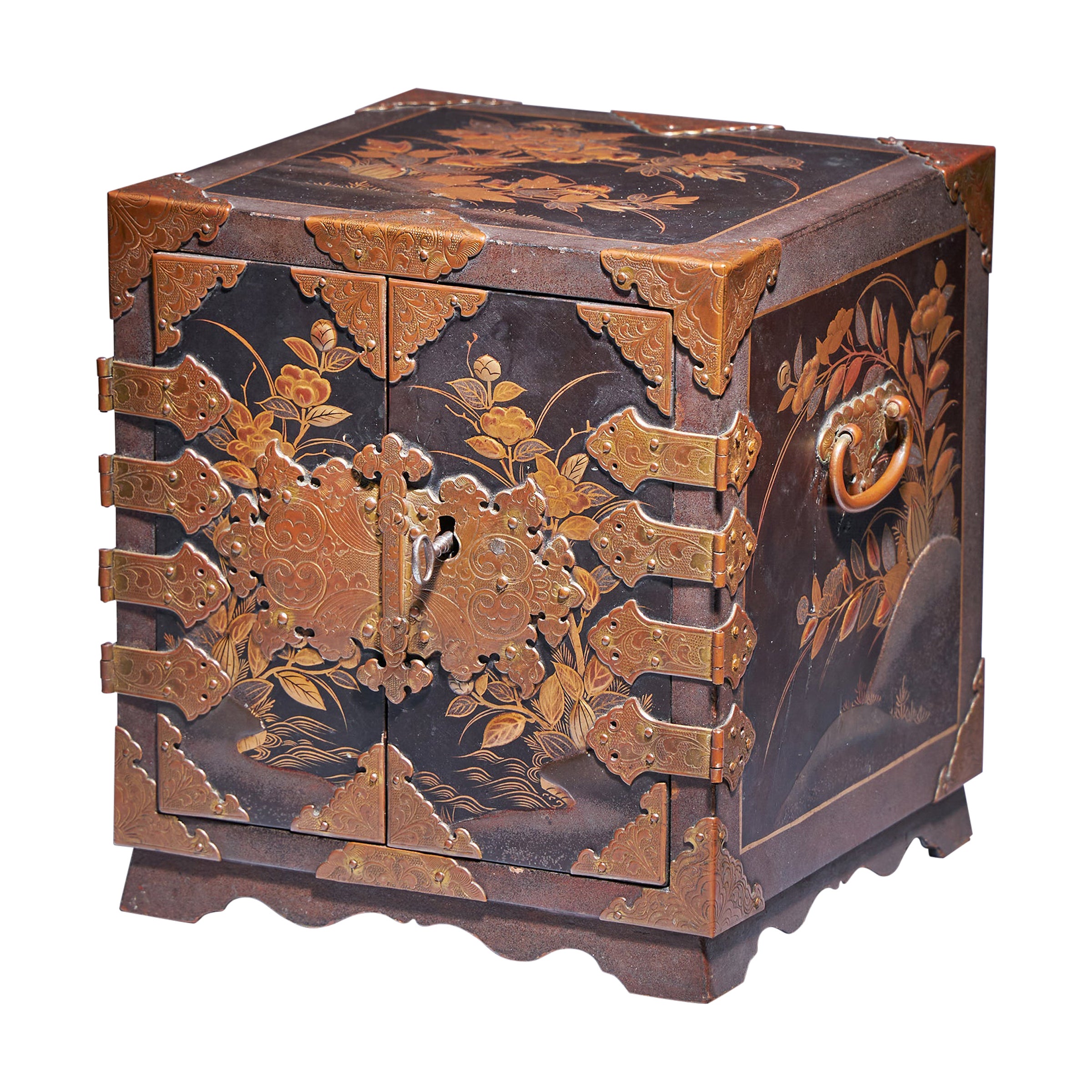Items Similar to Japanese 18th Century Tsukinami-e 6 Panel Floor Screen, Edo Period
Want more images or videos?
Request additional images or videos from the seller
1 of 21
Japanese 18th Century Tsukinami-e 6 Panel Floor Screen, Edo Period
About the Item
A Japanese 18th Century Tsukinami-e 6 Panel Floor Screen depicts the Activities of the Twelve Months of the Year, mineral pigments on gold leaf, mounted on wood panels with 6 frames of faux bamboo forms and hinged together. There are 6 panels total expressing the activities of each month of the court life in Kyoto of the 18th century, 4 scenes on each panel, and 2 scenes describing each month. A total of 24 scenes to complete the whole story for this artwork.
There are more than 275 figures in the paintings and you can see many traditional Japanese customs with hundreds of different suits of Kimonos in numerous designs accompanied with rich colors, and attractive patterns to fit the different ages and sexes. These figures are presented in a vast of interesting postures by walking, running, sitting, laying, hugging, working, singing, talking, drinking, bowing, selling, buying, napping, sleeping, resting, chasing, watching, thinking, playing, asking, dressing, writing, cooking, serving, gossiping, and playing musical instruments, and much more in doing something in the everyday activities. In addition to the hundreds of figures, there is more to see such as architecture in building design, types of furniture of tables, desks, and book stands, bonsais, plants, trees, flowers, landscaping, wall decorations, candle stands, oil lamps, carrying lanterns, lacquer boxes, house appliances, supplies of kitchen wares, water buckets, and so forth. You can also find some charming decorated objects for the top portions of human bodies, such as hats, and many beautiful colorful head fabrics plus footwear and umbrellas. This is a great resource for researching Japanese culture in its history, so much to see, learn, and chart to fulfill excitement about ancient life in Japan.
Tsukinami-e (literally, "pictures of months in sequence") illustrate the typical activities and festivals throughout the year. Beginning in the tenth century, the subject became an event most important for secular painting in Japan, and it remained popular among the members of all schools of painting through the Edo period. This artwork by an anonymous artist depicts the monthly events integral to the lives of Kyoto citizens.
Period: Edo period (1615–1868)
Date: 18th century
Culture: Japan
Dimensions: 2 panels in 22.5" W x 65" H ; 4 panels in 25" W x 65" H
Classification: Paintings
Condition: Overall in good condition, 2 visible lines on the panels, please see the pictures.
- Dimensions:Height: 65 in (165.1 cm)Width: 25 in (63.5 cm)Depth: 2 in (5.08 cm)
- Sold As:Set of 6
- Style:Edo (Of the Period)
- Materials and Techniques:
- Place of Origin:
- Period:
- Date of Manufacture:18th Century
- Condition:Repaired: 2 visible lines on the panels, they might be the broken parts of the paper and put back, please see the pictures. Wear consistent with age and use. Minor fading. Wear consistent with age and use.
- Seller Location:Norton, MA
- Reference Number:1stDibs: LU5848239677432
About the Seller
5.0
Platinum Seller
These expertly vetted sellers are 1stDibs' most experienced sellers and are rated highest by our customers.
Established in 2000
1stDibs seller since 2021
86 sales on 1stDibs
Typical response time: <1 hour
- ShippingRetrieving quote...Ships From: Norton, MA
- Return PolicyA return for this item may be initiated within 3 days of delivery.
More From This SellerView All
- Antique 18th Century, Georgian Cutlery Open CaddyLocated in Norton, MAAntique 18th Century English oak cutlery caddy with an elegant form.Category
Antique 18th Century American Decorative Boxes
MaterialsWood
- Japanese Carved Netsuke A Goose Biting a Fish-Signed by Tomotada, EdoLocated in Norton, MANetsuke Japanese Hand-Carved Mixed Material Figure, A Goose Biting a Fish-Signed by Tomotada from the Edo period. Ric.NA007 This item is 2" wide x 1" deep x 0.75" high in dimension,...Category
Antique 19th Century Japanese Decorative Boxes
MaterialsIvory, Paint
- Antique Japanese Carved Okimono Happy Buddha, Meiji PeriodLocated in Norton, MAAntique Japanese Carved Okimono Mixed Material Figure "Happy Buddha on Stand", Meiji Period This item is 2" wide x1.5" deep x 5" high in dimension, the wood stand measures 3" W x 2...Category
Antique 19th Century Japanese Decorative Boxes
MaterialsIvory, Paint
- Japanese Carved Okimono Polychrome Birds by Tenzan (天山), Meiji PeriodLocated in Norton, MAJapanese Carved Okimono Polychrome Birds, Signed by Tenzan (天山) on the bottom, Meiji Period. A truly hand-carved ivory figure with fine craftsmanship in a detailed carving Dimension...Category
Antique 19th Century Japanese Decorative Boxes
MaterialsIvory, Paint
- Japanese Lacquer Inro with Netsuke Okame Mask Meiji PeriodLocated in Norton, MAJapanese Lacquer Inro with Netsuke Okame Mask, brown lacquer with 3 sections and 2 compartments, and carved ivory polychrome Okame mask and a rope hair. This item is from the Meiji P...Category
Early 20th Century Japanese Decorative Boxes
MaterialsLacquer, Ivory
- Japanese Carved Netsuke Polychrome Figure by Gyokushi (玉芝), Edo PeriodLocated in Norton, MANetsuke Japanese Hand-Carved Polychrome Decorated Figure, Signed by Gyokushi (玉芝), Edo Period. A truly hand-carved ivory figure, A man is lifting a weight. It looks like he is chal...Category
Antique 19th Century Japanese Decorative Boxes
MaterialsIvory, Paint
You May Also Like
- A Japanese Edo Period Lacquer Kogo (Incense) Box, late 17/early 18th CenturyLocated in Spencertown, NYEarly Japanese Lacquer Incense Box (Kogo) Late 17thc. Of rectangular form with soft corners, decorated with a diaper pattern in gold lacquer on a brownish black ground, with pewter r...Category
Antique 17th Century Japanese Edo Decorative Boxes
MaterialsPewter
- Japan, Late 18th Century Gold Lacquer Inro by Kajikawa, Edo PeriodLocated in PARIS, FRLate 18th century Inro by Kajikawa. Edo period Beautiful inro in gold lacquer representing a continuous landscape on both sides. The interior in Nashiji lacquer. Some small traces...Category
Antique 18th Century Japanese Lacquer
MaterialsLacquer
- Japanese Lacquer Incense Box, Kogo, Momoyama or Edo Period, 16th/17th CenturyLocated in Austin, TXA wonderful Japanese lacquer incense box, kogo, with a design of sparrows in flight, late Momoyama or early Edo Period, circa 1600, Japan. The small box, called a kogo, was used t...Category
Antique Early 17th Century Japanese Edo Lacquer
MaterialsGold, Pewter
- Important Early Edo Period 17th Century Miniature Japanese Lacquer CabinetLocated in Oxfordshire, United KingdomA Rare and Important 17th Century Miniature Japanese Lacquer Cabinet, 19 cm H, 17cm W, 16.5cm D. The exquisitely decorated cabinet depicts fine floral raised scenes to each side. l...Category
Antique 17th Century Decorative Boxes
MaterialsLacquer
- Japanese Edo Period Igarashi School Long Lacquer Box, Tanzaku-BakoLocated in Austin, TXA stunning Japanese Edo period lacquer tanzakubako, box for poem cards, late 18th-early 19th century, Edo Period, Japan. Attributed to the Igarashi School, this box is masterfully ...Category
Antique Early 19th Century Japanese Edo Lacquer
Materials24k Gold
- Japanese Lacquer Maki-E Scroll Box Fubako by Kansonsai Edo PeriodLocated in Atlanta, GAA Japanese lacquered wood fubako (a box to store document or small scroll painting) circa late 18th century of Edo period. The rectangular box features a deep lid with rounded corners and recessed mid-edge and a lower box with two bronze medallion rings and tasseled silk ties. The surface of the fubako was elaborately decorated with hiramaki-e and a low takamaki-e on a mottled Mura-nashiji background. The motifs on the lid depict branches of Japanese pine with finely rendered needles on the lower part; on the upper part, it showcases fruited persimmon branches. Two different shades of gold fundame were used to contrast the design and augmented by scattered gold kirigane to highlight some of the leaves. The design continues and cascades down to all sides of the lid as well as the walls of the box. The two bronze medallions appear original to the box and the silk ties show significant fading from the age. This Fine fubako is signed on the lower wall "Kanshosai" in Kanji with a kao mark. All the trims were finished in gold fundame and the interiors a dense nashiji in gold. Kanshosai is the mark of the distinguished lacquer artist Lizuka Toyo I who also signed his work "Toyosai". He was active in the second half of the 18th century during Edo period, employed by Hachisuka Shigeyoshi (1738-1801), daimyo of Awa on Shikoku Island. Although most survived work bearing his marks are inros, he was also known to decorated trays and other larger objects...Category
Antique Late 18th Century Japanese Edo Lacquer
MaterialsWood, Lacquer
Recently Viewed
View AllMore Ways To Browse
History Objects
Culture Object
Buys Antique Furniture
Lamp Box
Used Event Furniture
Kitchen Floors
Decorative Hand Painted Panels
18th Century Fabric
Antique Kitchen Box
18th Century Painted Panels
Box Hat
18th Century Pictures
Antique Bedroom Pictures
Antique Bedroom Furniture Pictures
Antique Wall Box
18th Century Painted Wood Panels
Antique Fabric Panel
Edo Period Japanese Painting





